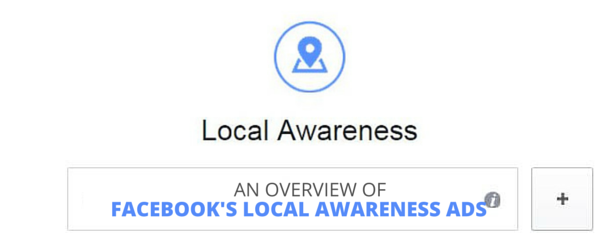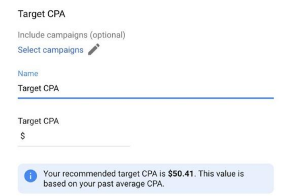
Social media marketing is all about delivering the right message to the right audience. It has layers of specificity that traditional marketing methods – television, radio, etc. – can merely hint at.
Operating a Facebook profile, for example, gives a small business owner the opportunity to engage in real time with their customer base – comment threads indicate how happy they are with your products, ‘like’ options show how engaged they are, and promotional campaigns give your customers a chance to win prizes that are valuable specifically to them.
So, it should come as no surprise that towards the end of last year, Facebook announced their ‘Local Awareness’ advertising objective, which gives marketers the ability to target users who are within a certain geographic radius of their location. Basically, it works just as it sounds. When mobile users have their ‘Location’ setting enabled (or when desktop users have their IP address available) the ad you purchase and create will be pushed out to them.
This is all a part of Facebook’s recent tendency to stress the importance of reach over clicks. Their Head of Measurement and Insights, Brad Smallwood, has stated, “99 percent of sales generated from online branding ad campaigns were from people that saw, but did not interact with, ads – proof that it is the delivery of the marketing message to the right consumer, not the click, that creates real value for brand advertisers.”
Ideally, this will present a win-win scenario for users and advertisers alike, with users being confronted with ads that are more likely to represent something valuable to them and advertisers able to more consistently ensure that their ads go out to legitimate potential customers. I suppose with the added benefit for Facebook themselves – making more money selling ad space, that is – you could call it a win-win-win scenario.
The Setup
This new ability to target potential customers on a geographically specific basis means that there are certain new processes to learn in terms of purchasing ad space and creating the ad. If you have years of experience with how these processes have progressed over Facebook’s history, you probably will find many of the new steps intuitively logical. Just in case though, let’s run through how it works and talk about some best practices for getting the most out of your local awareness ads.
Tip: If, on the off chance, you don’t yet have a Facebook page for your business, stop reading here. Unlike traditionally purchasable Facebook advertisements, an actual business page is required for geocentric ads. But – that’s okay. You should have a business page anyway. Social media presence is key for any entrepreneur in 2015, and Facebook is the place to start. These new local awareness offerings are the perfect catalyst to finally getting around to it – the 21st century is calling… Answer!
First, you’ll have to decide exactly how large of a radius your ad should have, geographically speaking.
Facebook sets the minimum at one mile and the maximum at fifty miles. These are the types of things that would typically be a perfect candidate for A/B testing, but these ads are still so new that it may prove difficult to track success rates (more on this in a minute.)

So, you’ll have to think about it in terms of what you think makes sense for your business. Remember, the point of this type of ad is to deliver the right message to the right audience, so think about what you sell. If you’re a pizzeria, it may not be advantageous to show geo-specific ads to anyone scrolling through their news feed that happens to be within 50 miles. Think in terms of your neighborhood, as well. You’ll likely want to include a reach that coincides as closely as possible with the range at which prominent foot traffic occurs.
Next, you’ll have to create the actual ad.
This is something that you probably have experience with, or at least something very similar. The space available to you in a local awareness ad is similar to newspaper blurb: 90 characters of text are placed underneath a 25 character emboldened headline. You also have an optional 200 character description and CTA for the user to obtain directions.
The ‘Get Directions’ option is a key component in the general ‘Local Awareness’ rollout, and we strongly suggest taking advantage of it for a couple of reasons. First, it will create a much more seamless user experience, from scrolling down their newsfeed to being given directions directly from their current location to yours, all within a matter of moments. That truly represents the power of social media marketing and audience-specific targeting.
Also, though, this option will remind the user that these ads are location-specific, not person-specific. There’s nothing compromised in terms of their privacy or personal information. In other words, the option to get directions specific to their location will prove that they are only receiving the advertisement because of the location information that they have volunteered by having that setting turned on.
Finally, you’ll want to layer the specificity with factors beyond location, as well.
The geocentricity of these new ads is the star of the show, but there are other factors to consider as well. Just like with traditional Facebook ads, certain times of day work better for certain ads and offerings. These will be more evident to you based on the product that you are offering: if you are a coffee shop, you can increase the frequency and range of your ad in the morning hours. If you are a swanky restaurant – one that doesn’t depend on foot traffic as much – you might want to increase the geographic range on your ad to attract drivers as well. Whatever your product or service is, think about what its characteristics say about how your advertisement will perform.
As we mentioned earlier, because geo-specific ads are relatively new, the jury is still very much out on the relative success of various strategies. For now, be sure to keep an open and flexible mind and apply them with an eye towards your particular products. Also, keep an eye on the front door. In most cases, the main goal with these ads is to increase foot traffic and that’s a fairly easily tracked development. If a large increase in foot traffic coincides with your geo-centric ad placement, you know you’re doing it right.
Recap
Increasing the specificity with which an ad is targeted – as long as it doesn’t offer compromised personal privacy as a byproduct – is a positive development for both customers and marketers. Facebook’s local awareness ads are a great example of this. If you find a way to use them that incorporates your particular branding strategy and product offering, you’ll see both your brand engagement and foot traffic improve as a result.
(220)







